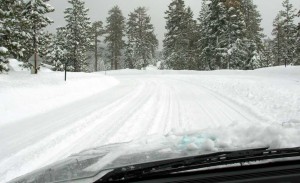Winter storm coming in this weekend.
A winter storm warning has been posted by the National Weather Service for this weekend beginning at 1pm Thursday and ending at 4am Saturday morning. This affects areas above 2000′ elevation. Heavy snow is expected at the higher elevations.
If you’re headed into the Sierras, please plan ahead. As always, carry chains.
Click HERE to read the advisory.
 Ok we admit: this is late in the season and there isn’t a lot of snow on the ground right now. But there are a series of storms moving in this week and being prepared for winter driving conditions in the mountains can save you a lot of time and trouble. It can even save your life. Be prepared.
Ok we admit: this is late in the season and there isn’t a lot of snow on the ground right now. But there are a series of storms moving in this week and being prepared for winter driving conditions in the mountains can save you a lot of time and trouble. It can even save your life. Be prepared. The days are at their shortest but there are still many healthy fruits and vegetables at their prime during the winter season. Enjoy nutrient-packed
The days are at their shortest but there are still many healthy fruits and vegetables at their prime during the winter season. Enjoy nutrient-packed